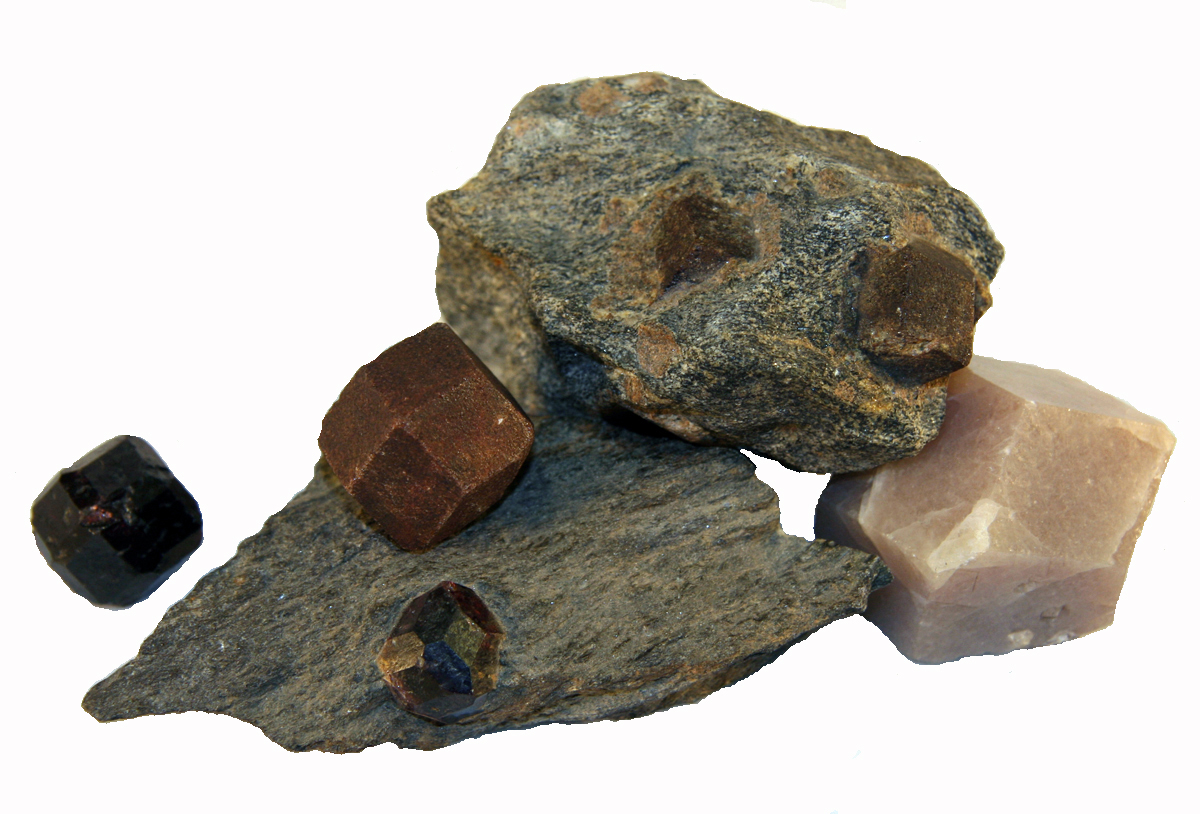GEOL 20 sedimentary rocks + minerals quiz (Final Vers.)
1/22
There's no tags or description
Looks like no tags are added yet.
Name | Mastery | Learn | Test | Matching | Spaced |
|---|
No study sessions yet.
23 Terms

CLASTIC/DETRITAL
GRAIN:
size— <1/256mm
shape— very fine
sorting— well-sorted
HCI: NO reaction
CEMENT: calcite
POROUS: yes
MINERAL(S): mostly clay, quartz, feldspars
ENVIRONMENT: continental to marine
OTHER: splits easily, feels chalky-to-smooth
Shale (mudstone)
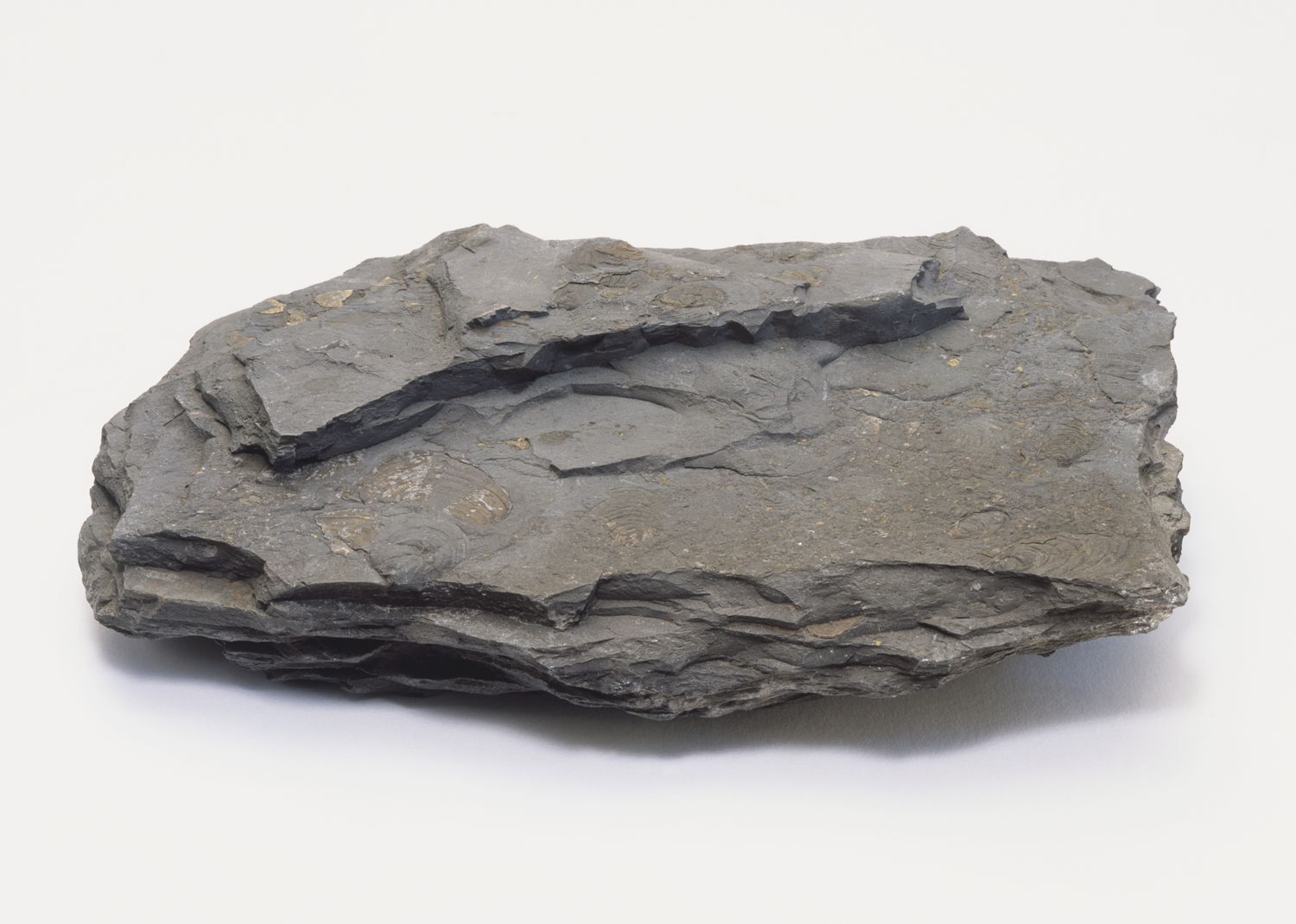
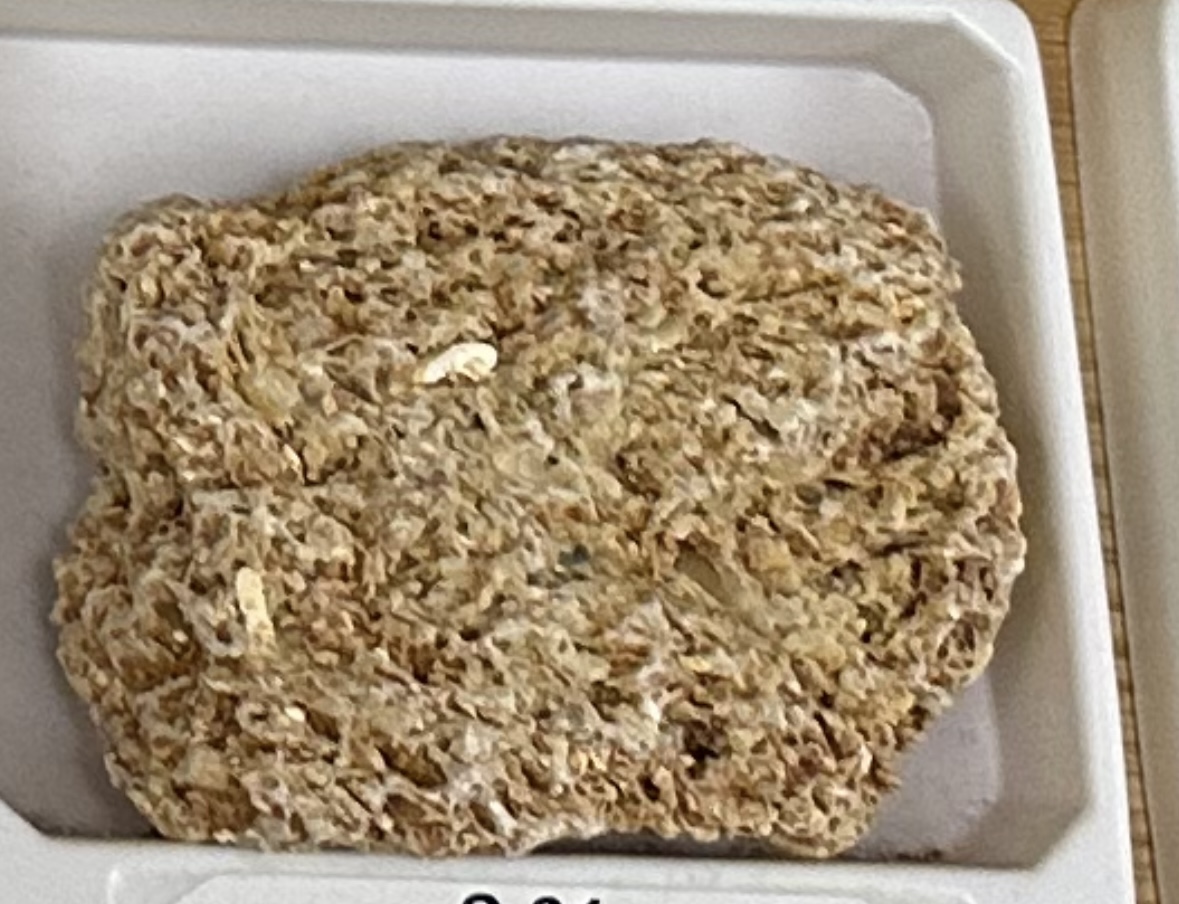
CHEMICAL/BIOCHEM
GRAIN:
size— 1 - 4mm
shape— “chunky”, granola-like
sorting— poorly-sorted
HCI: reaction
CEMENT: calcite
POROUS: yes
MINERAL(S): calcium (shell fragments)
ENVIRONMENT: marine (shallow reef)
OTHER: looks like oats, made almost entirely of shell fragments
Coquina
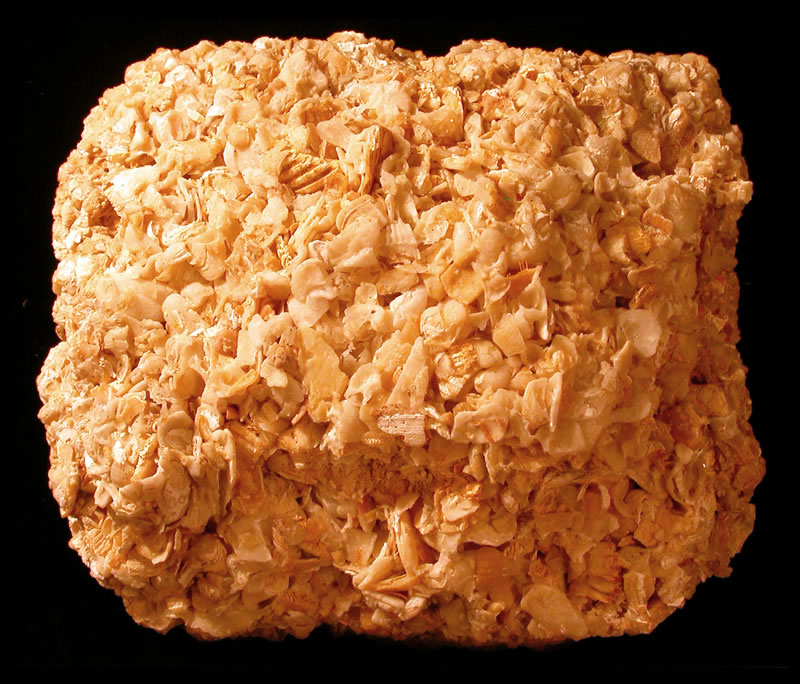
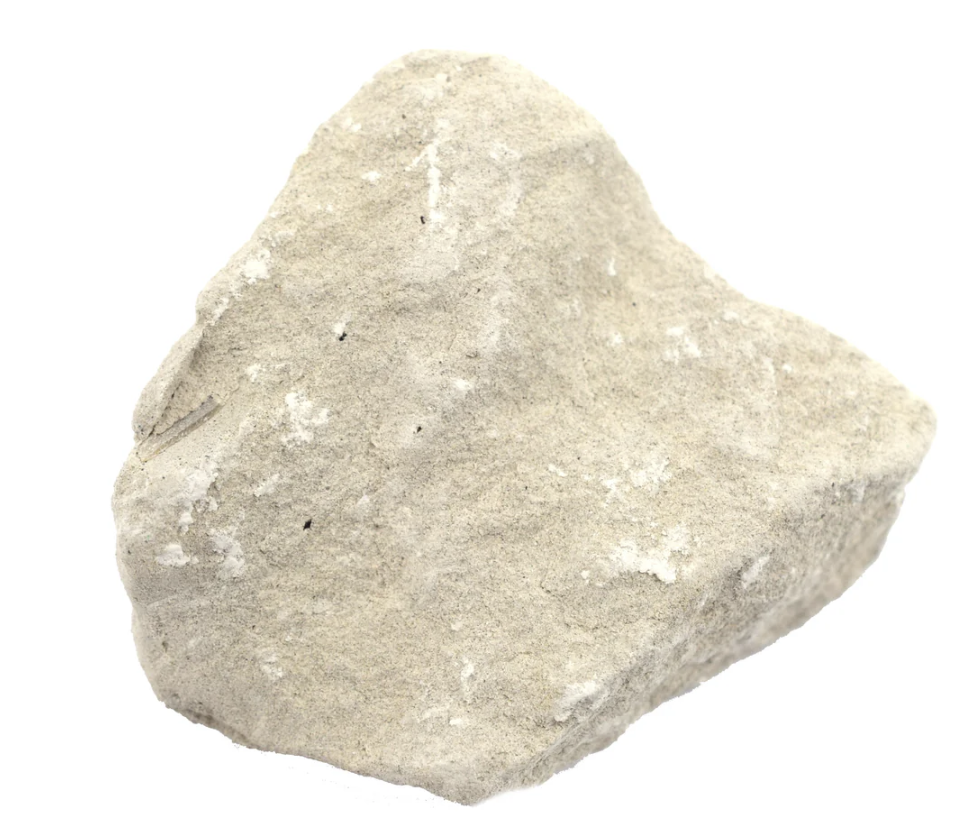
CHEMICAL/BIOCHEM
GRAIN:
size— ranges from 1/16 - 2mm
shape— very fine to very coarse
sorting— well-sorted
HCI: reaction
CEMENT: well-cemented, “coarsely crystalline”
POROUS: no
MINERAL(S): calcium carbonate
ENVIRONMENT: continental to intermediate marine
OTHER: waxy
Limestone
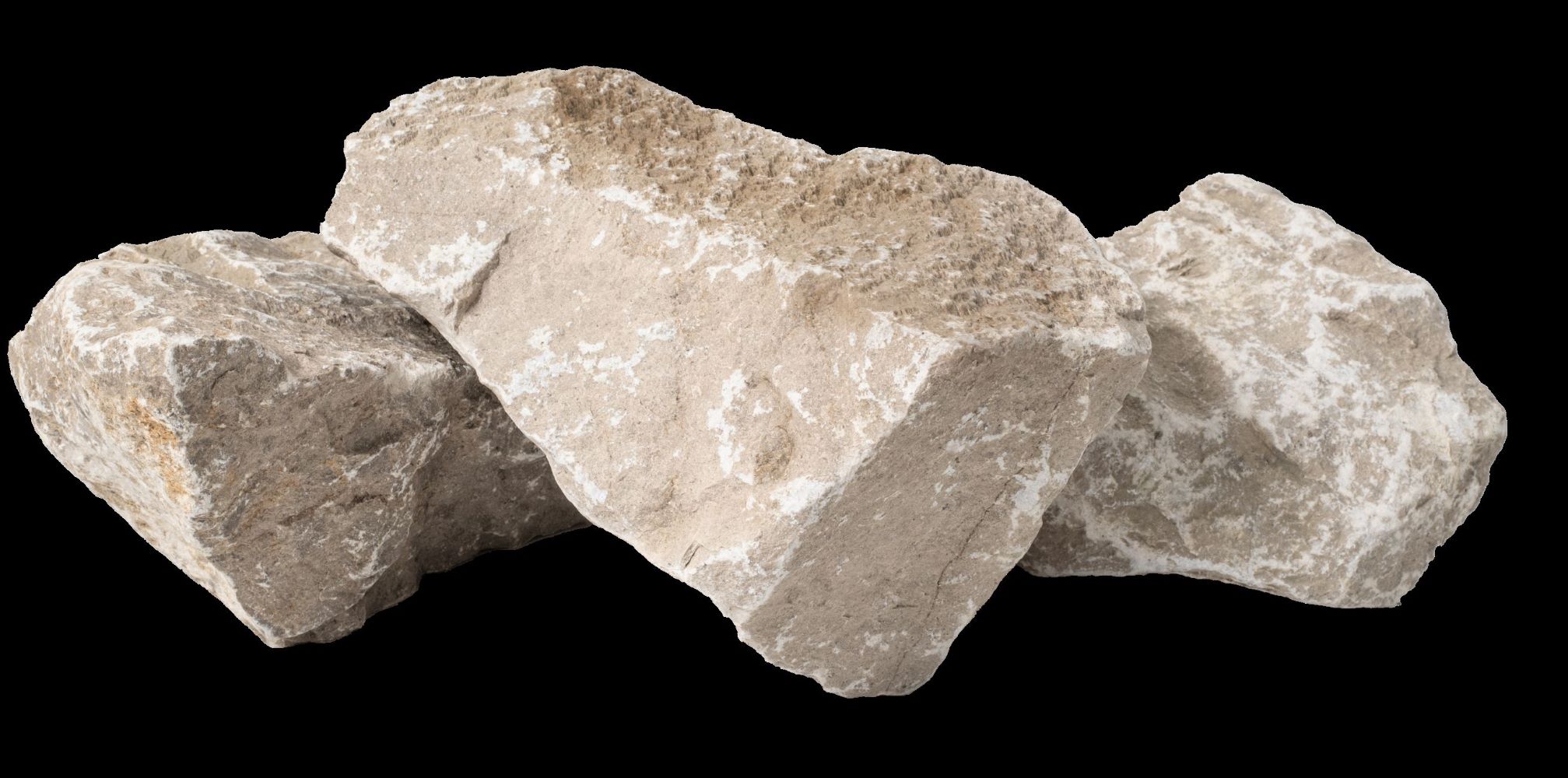

CLASITIC/DETRITAL
GRAIN:
size— 1/16mm - 2mm
shape— coarse angular grains
sorting— poorly-sorted
HCI: reaction
CEMENT: calcite
POROUS: yes
MINERAL(S): quartz, feldspar, rock and/or clay
ENVIRONMENT: continental (alluvial fan)
OTHER: feels gritty or sandy, variable grain size
Arkose (feldspar sandstone)
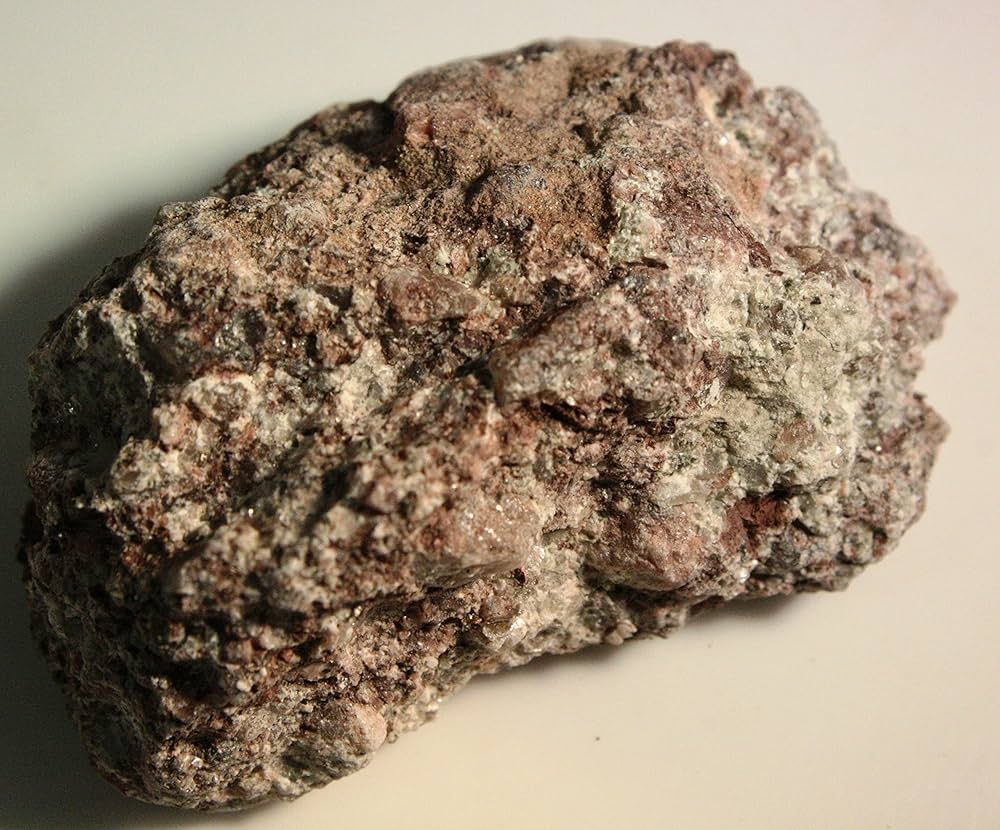
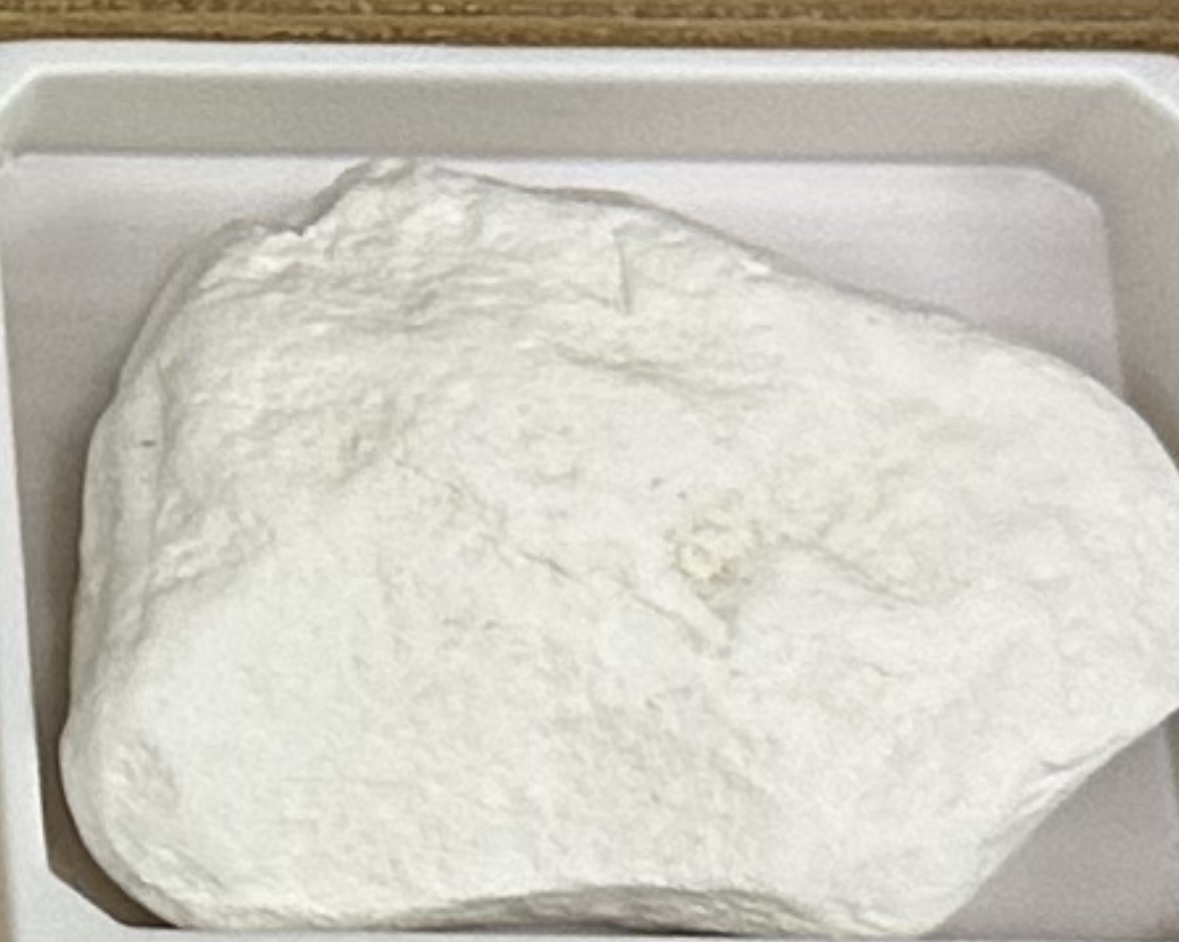
CHEMICAL/BIOCHEM
GRAIN:
size— <1/256mm - 1/8mm
shape— very fine
sorting— well-sorted
HCI: reaction
CEMENT: poorly-cemented by calcite
POROUS: yes
MINERAL(S): calcium, clay minerals
ENVIRONMENT: intermediate marine (continental slope/rise)
OTHER: very soft and light earthy rock, white to light brown
Chalk
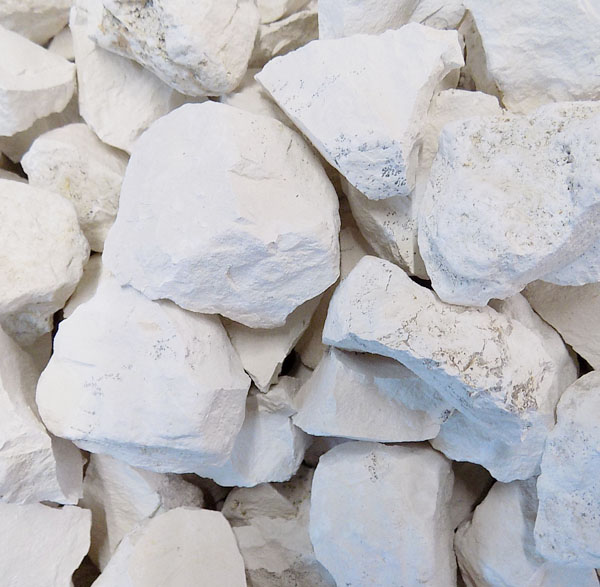

CHEMICAL/BIOCHEM
GRAIN:
size— micro-crystalline
shape— conchoidal fracture
sorting— well-sorted
HCI: NO reaction
CEMENT: silica
POROUS: low
MINERAL(S): quartz, chalcedony, flint, opal, etc.
ENVIRONMENT: deep marine (abyssal plain)
OTHER: scratches glass, hard and waxy feel
Chert
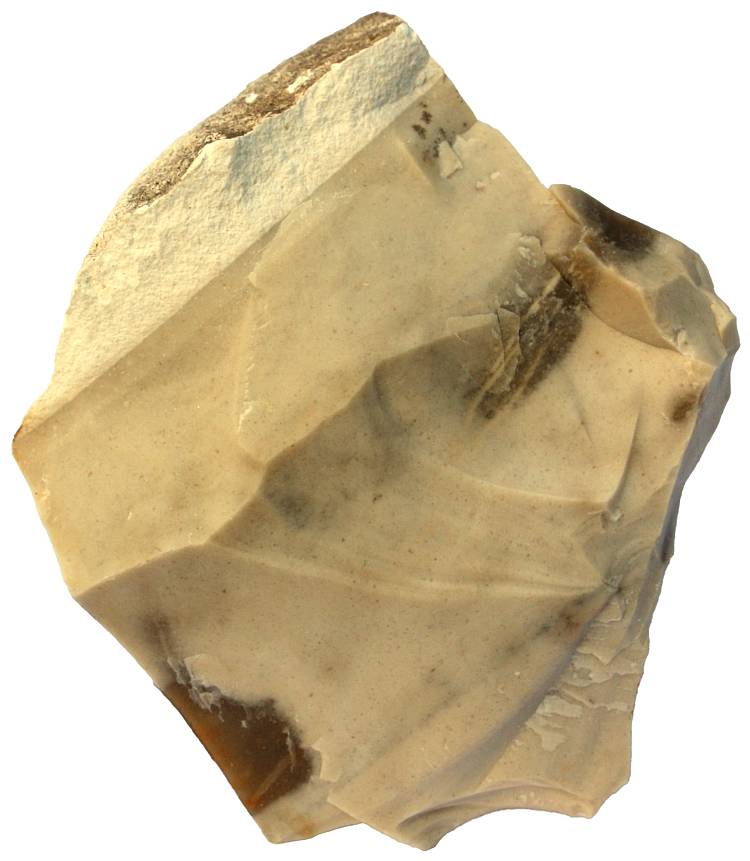
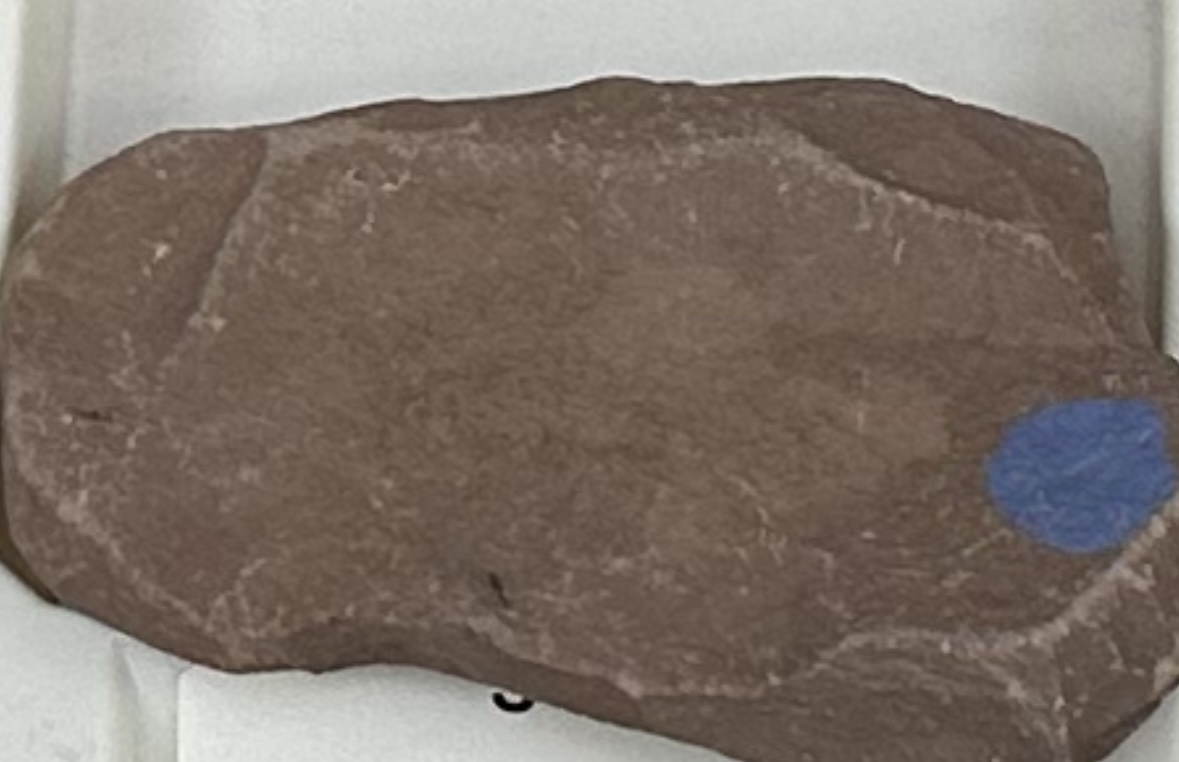
CLASTIC/DETRITAL
GRAIN:
size— 1/256mm - 1/16mm
shape— very fine
sorting— well-sorted
HCI: likely reaction
CEMENT: calcite
POROUS: low
MINERAL(S): quartz, feldspar, rock and/or clay fragments
ENVIRONMENT: continental (lake) to marine (continental slope/rise)
OTHER: feels chalky, does not split along layers (non-fissile)
Siltstone
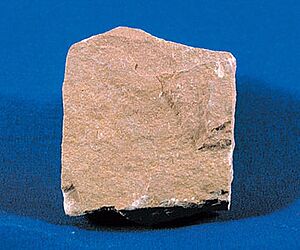
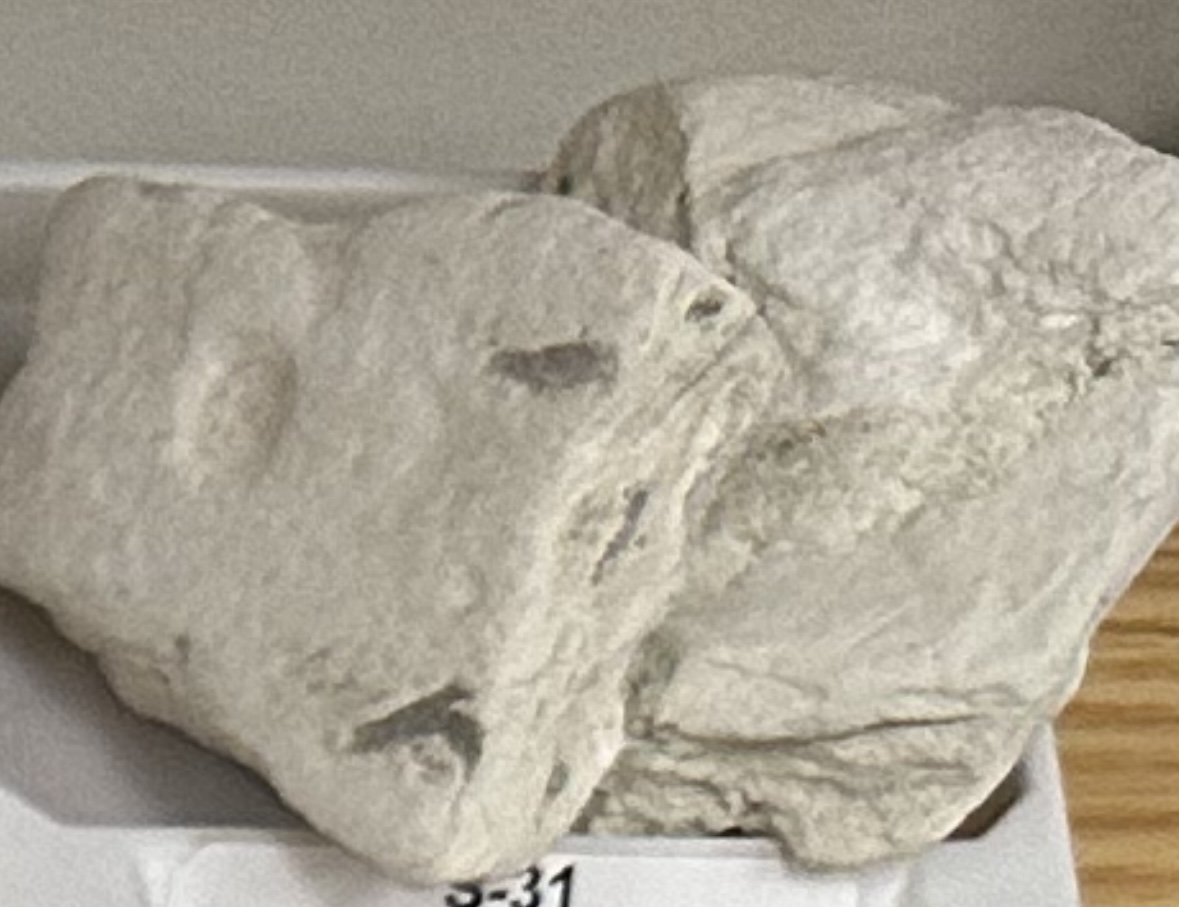
CHEMICAL/BIOCHEM
GRAIN:
size— <1/256mm - 1mm
shape— very fine
sorting— poorly-sorted
HCI: NO reaction
CEMENT: poorly-cemented
POROUS: yes
MINERAL(S): fossilized diatoms, quartz, chalcedony, flint, opal, etc.
ENVIRONMENT: deep marine (abyssal plain)
OTHER: very soft and light earthy rock, white to light brown, similar to chalk
Diatomite
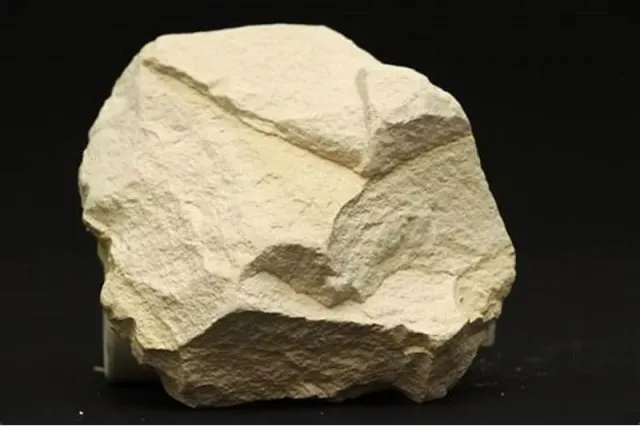
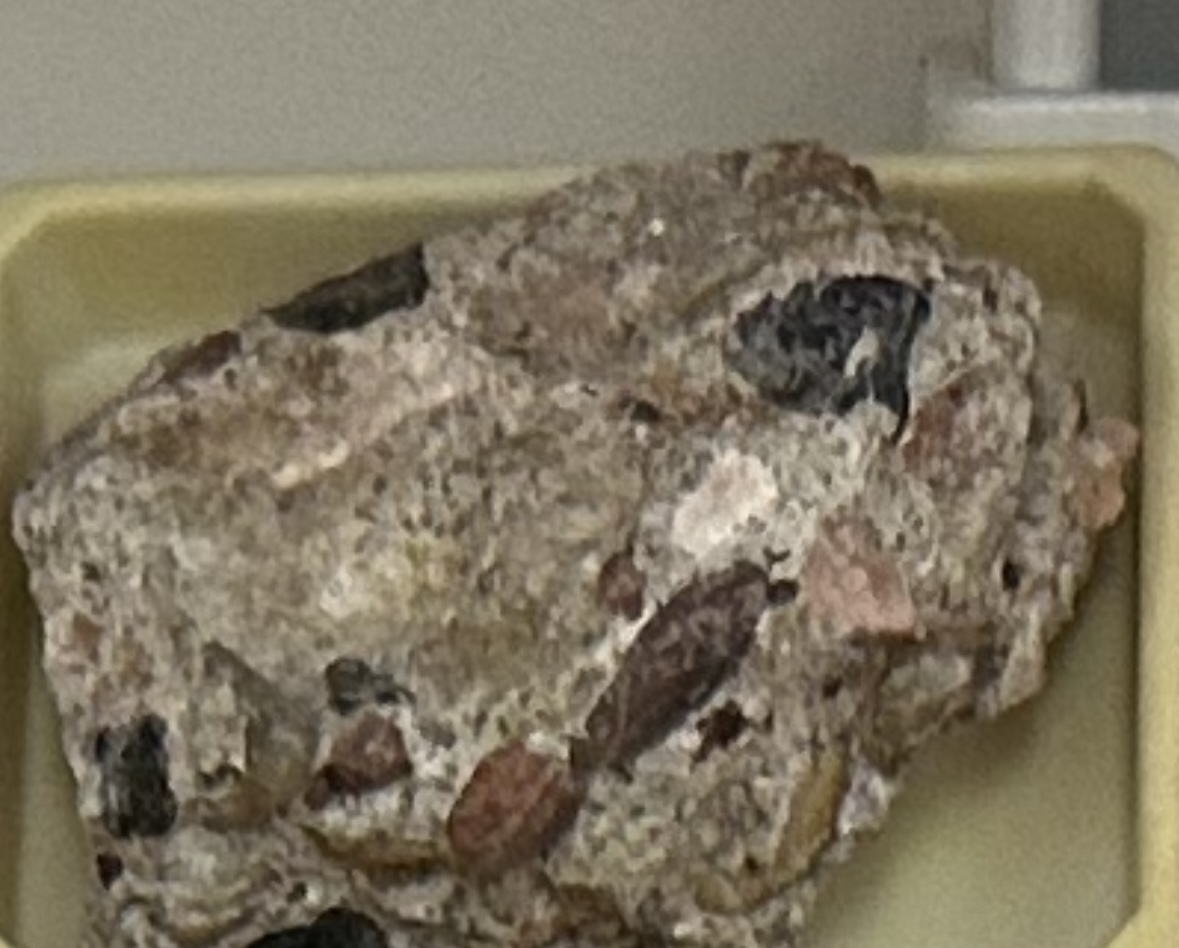
CLASTIC/DETRITAL
GRAIN:
size— >2mm gravel
shape— rounded grains
sorting— poorly-sorted
HCI: reaction
CEMENT: calcite
POROUS: yes
MINERAL(S): quartz, feldspar, rock and/or clay minerals
ENVIRONMENT: continental (river/stream channel)
OTHER: very chunky, generally poorly sorted fragments
Conglomerate
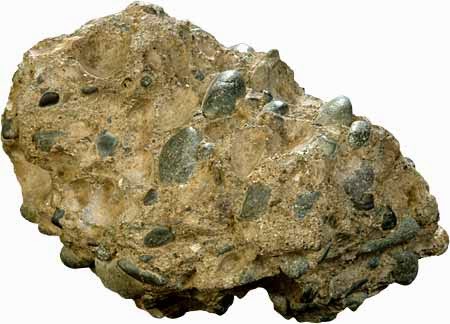
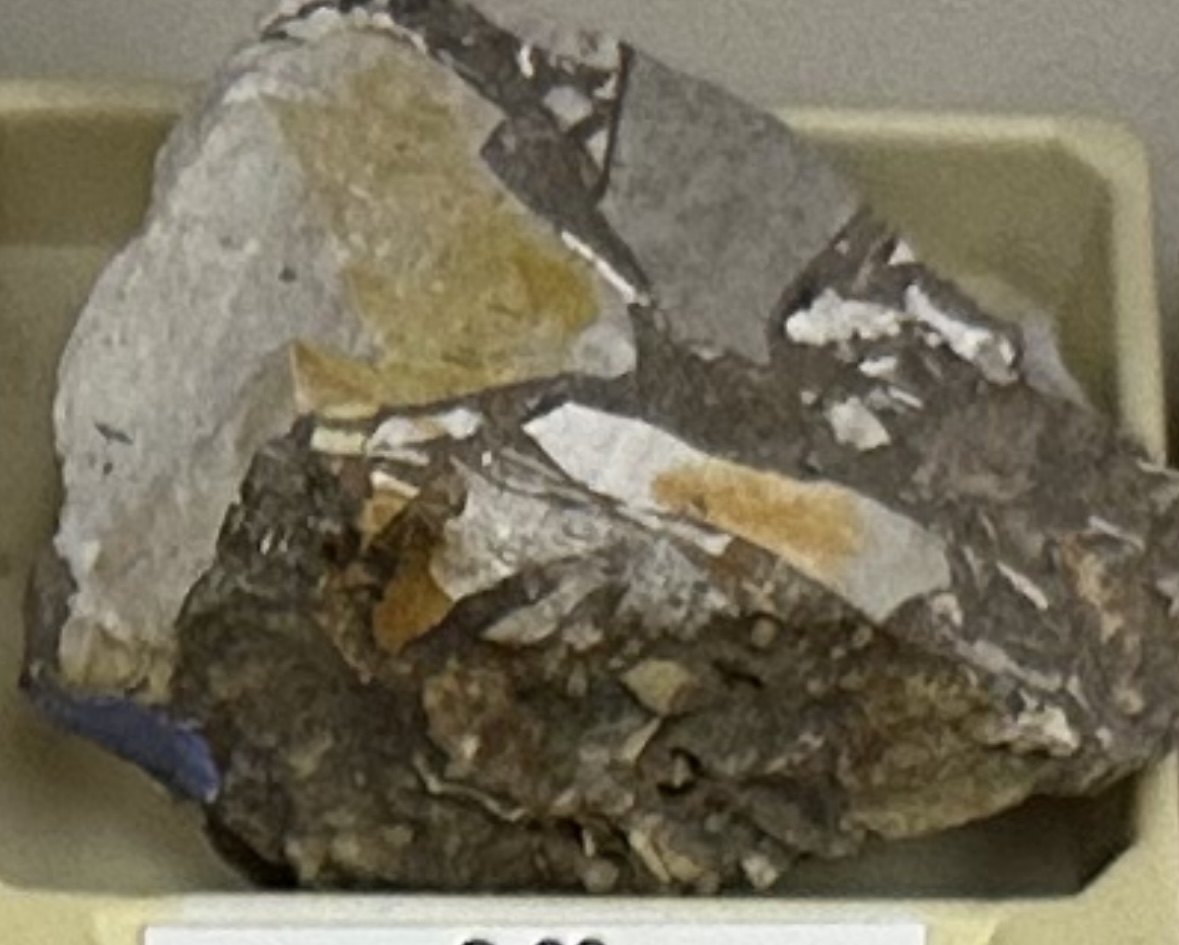
CLASTIC/DETRITAL
GRAIN:
size— >2mm
shape— angular grains
sorting— poorly-sorted
HCI: NO reaction
CEMENT: calcite
POROUS: yes
MINERAL(S): quartz, feldspar, rock and/or clay minerals
ENVIRONMENT: continental (alluvial fan)
OTHER: very chunky like conglomerate but sharper/more angular, generally poorly sorted fragments
Breccia
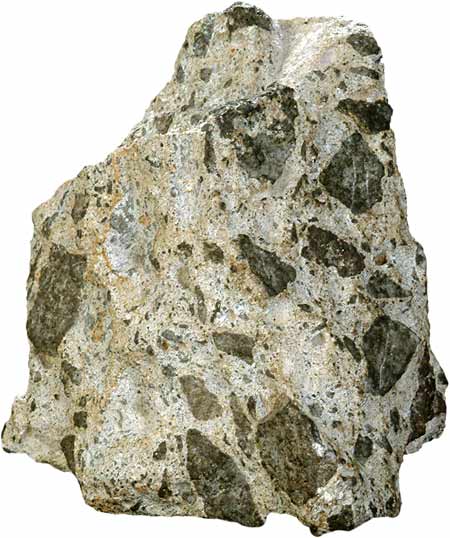

CLASTIC/DETRITAL
GRAIN:
size— 1/16mm - 2mm
shape— gritty/sandy
sorting— well-sorted
HCI: NO reaction
CEMENT: quartz
POROUS: yes
MINERAL(S): quartz, feldspar, rock and/or clay fragments
ENVIRONMENT: continental (river/stream channel)
OTHER: asymmetrical ripplemarks
Quartz sandstone
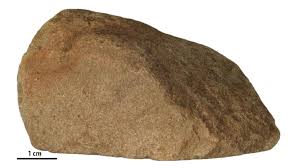

CHEMICAL/BIOCHEM:
GRAIN:
size— crystalline to micro-crystalline
shape— coarse fossils
sorting— poorly-sorted
HCI: reaction
CEMENT: well-cemented
POROUS: yes
MINERAL(S): calcite
ENVIRONMENT: marine (shallow reef)
OTHER: fossils present
Fossliferous limestone
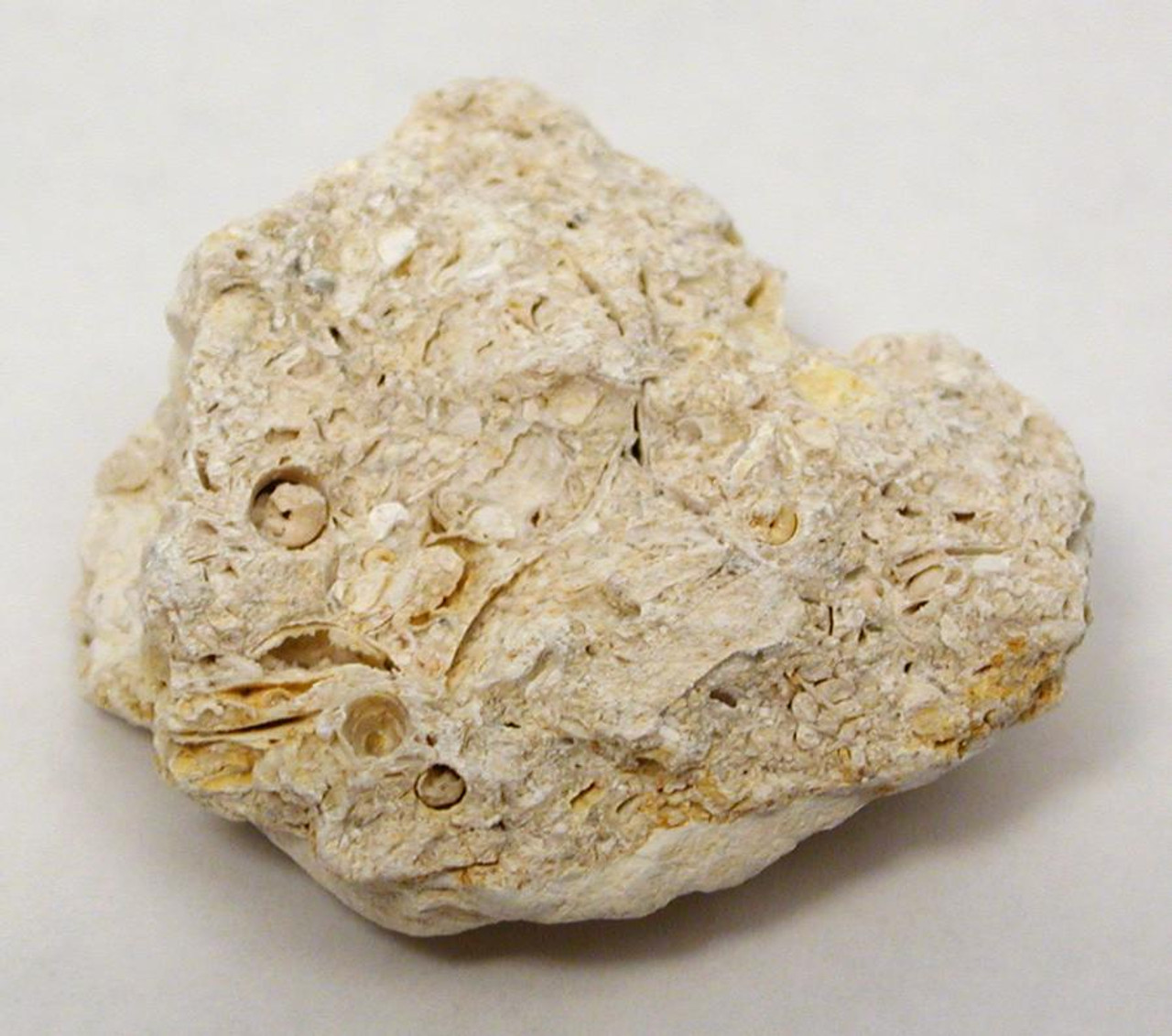
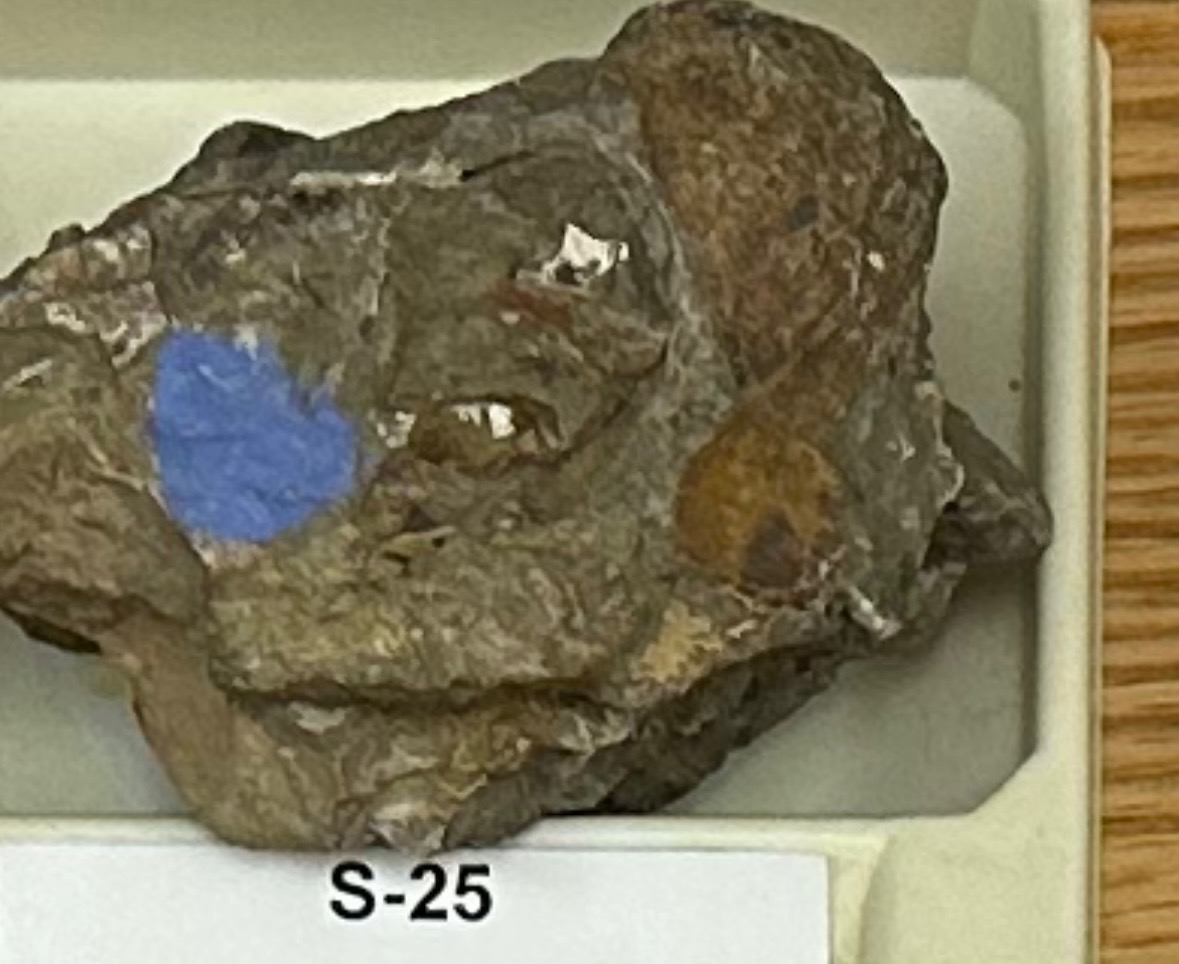
CLASTIC/DETRITAL:
GRAIN:
size— 1/16mm - 2mm
shape— gritty/sandy
sorting— poorly-sorted
HCI: reaction
CEMENT: well-cemented, calcite
POROUS: yes
MINERAL(S): quartz, feldspar, rock and/or clay minerals
ENVIRONMENT: marine (shallow inner shelf)
OTHER: fossils present
Fossiliferous sandstone
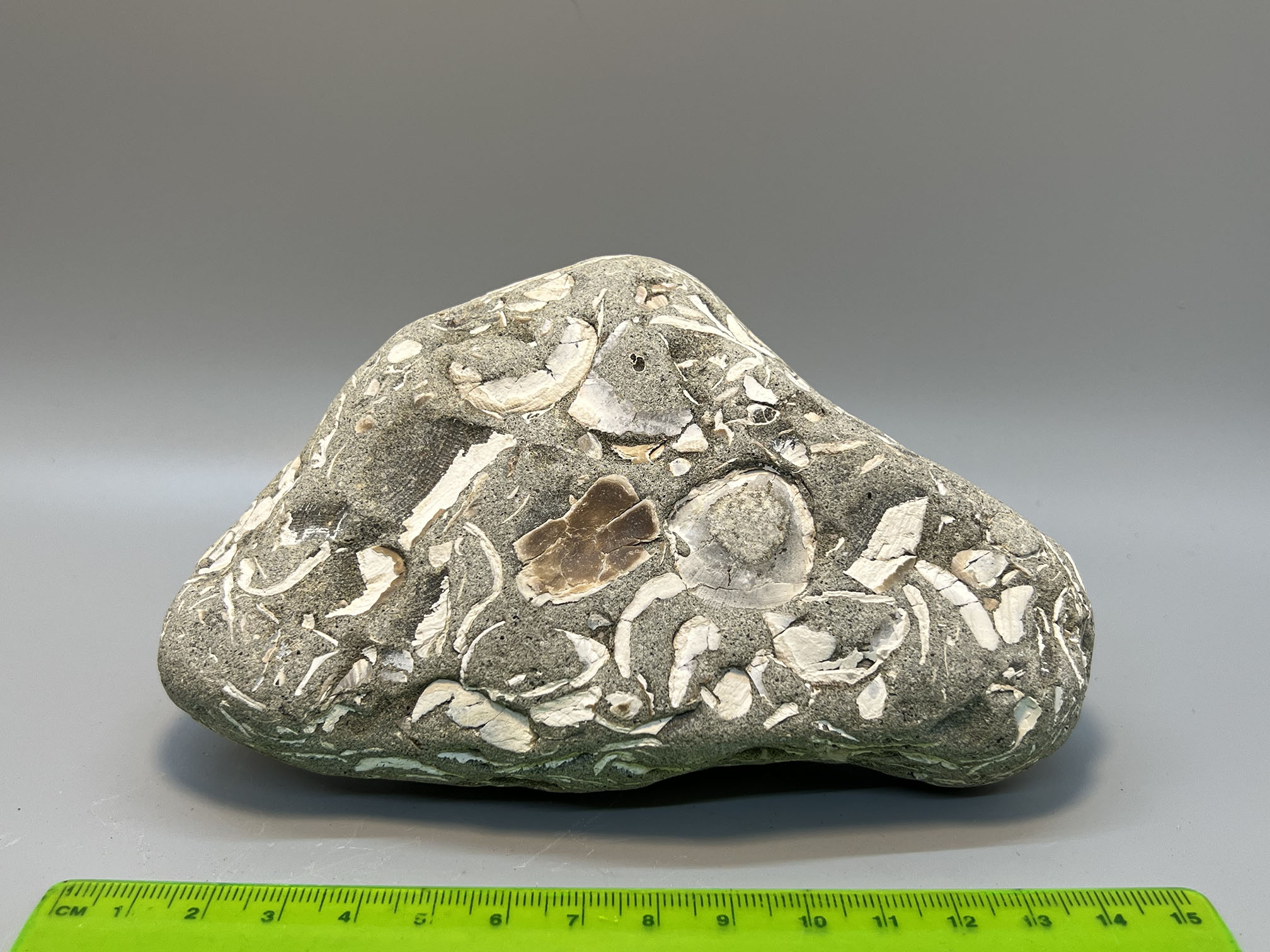
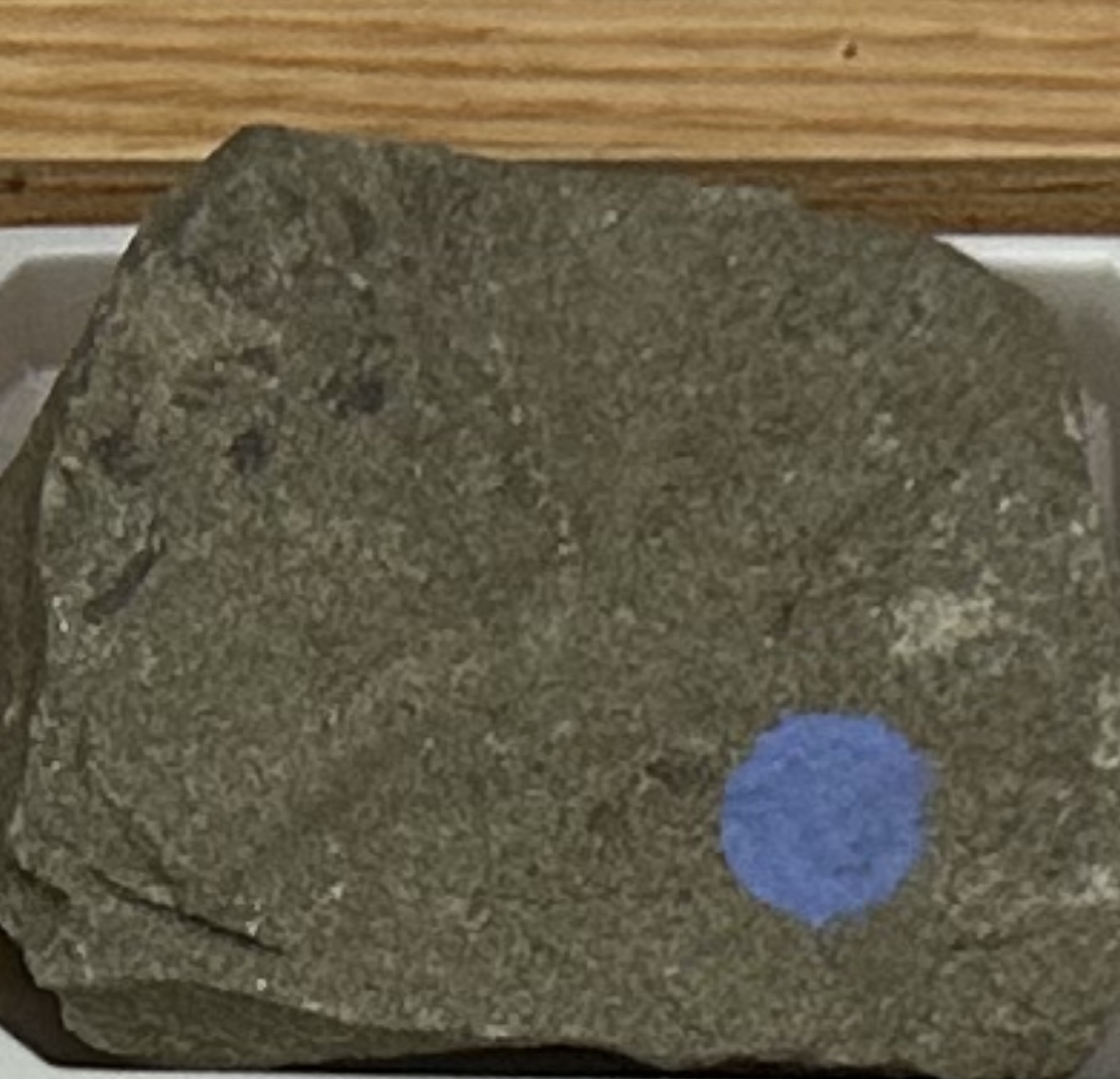
CLASTIC/DETRITAL:
GRAIN:
size— 1/16mm - 2mm
shape— uniform grain
sorting— poorly-sorted
HCI: possibly
CEMENT: well-cemented
POROUS: low
MINERAL(S): quartz, feldspar, rock and/or clay minerals
ENVIRONMENT: marine (continental slope/rise)
OTHER: angular grains
Graywacke
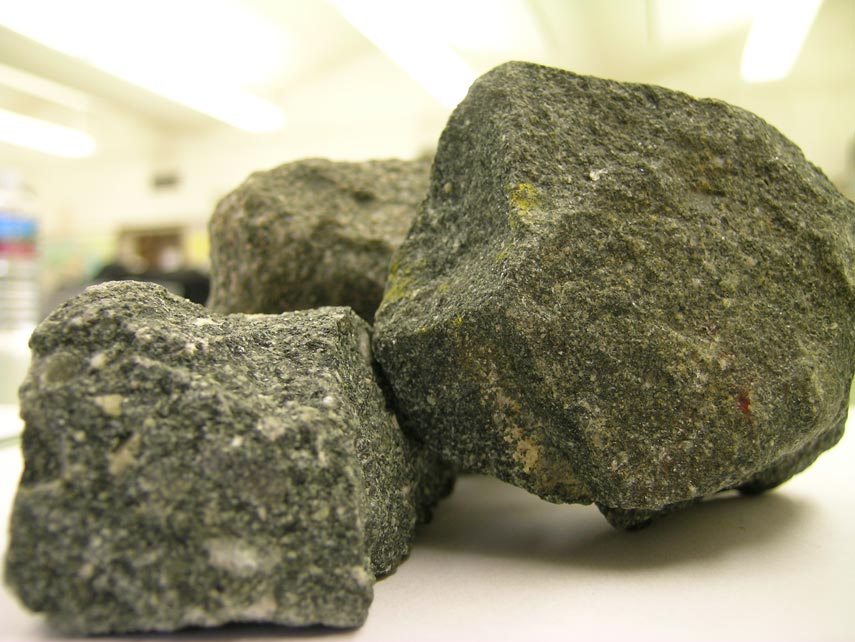
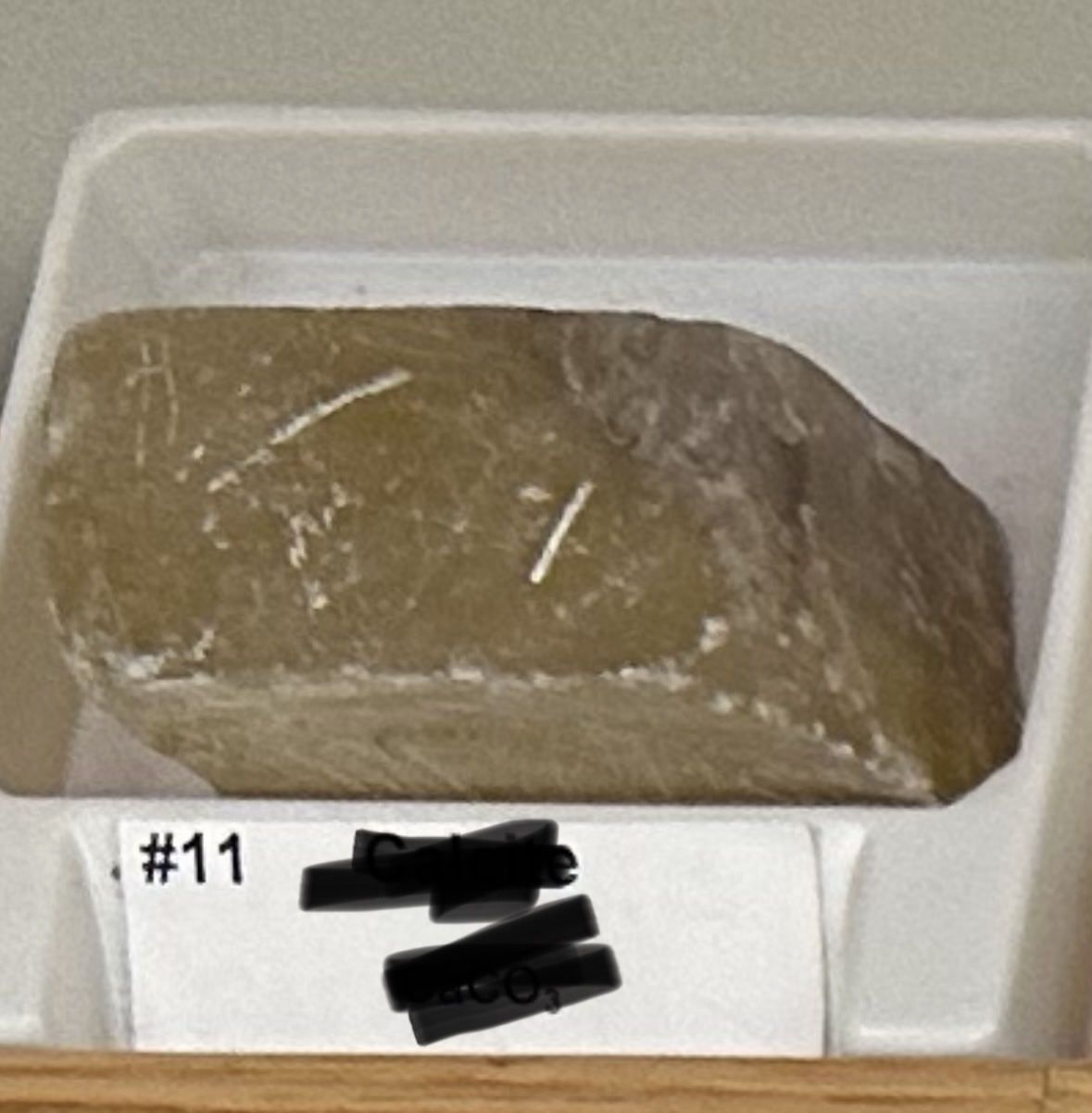
Mohs hardness of 3
feels light
in crystalline varieties, a vitreous luster.
Color is white or none, though shades of gray, red, orange, yellow, green, blue, violet, brown, or even black can occur when the mineral is charged with impurities.
non-90° angles
calcite
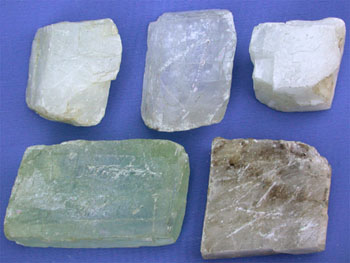
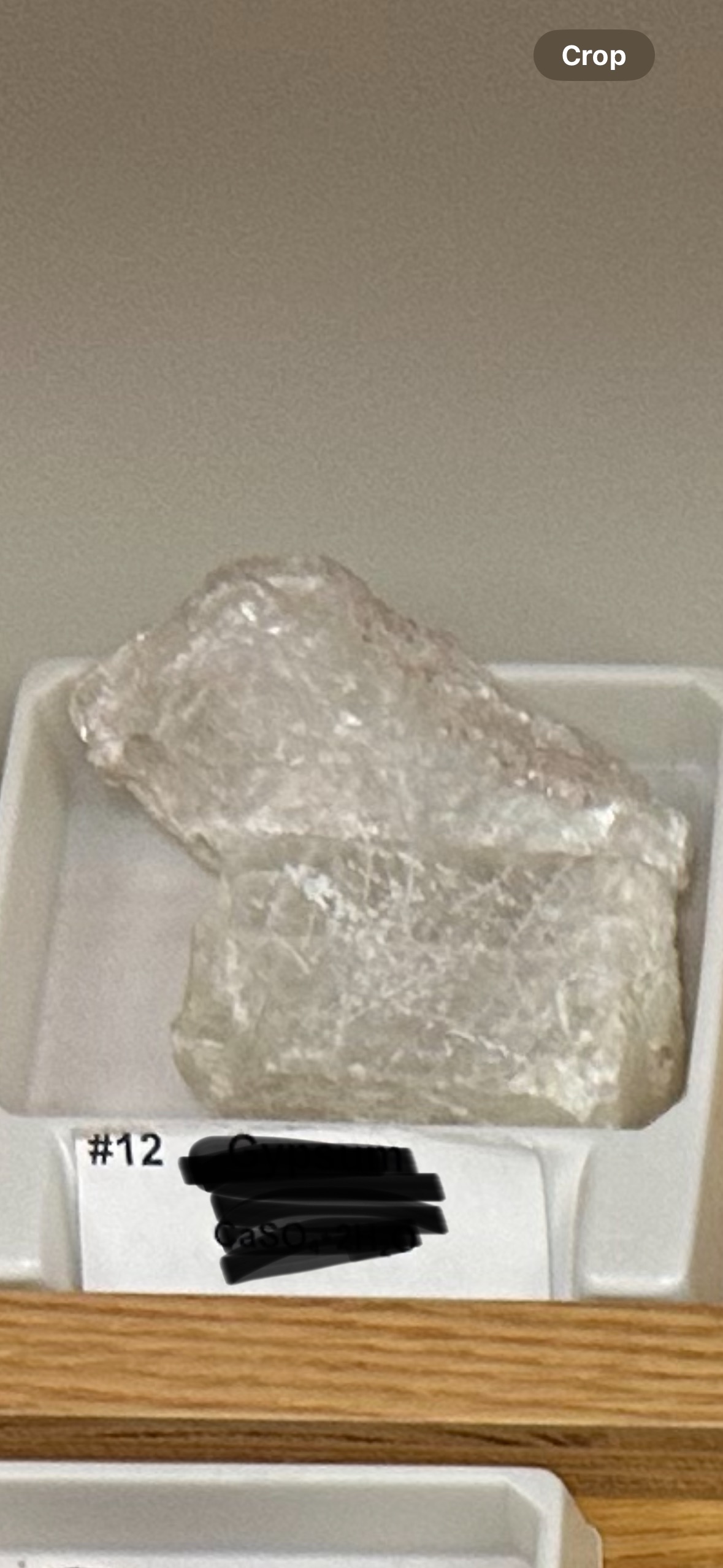
white, colorless or gray in massive form, crystals are clear, transparent to translucent. If impurities are present, gypsum may also appear to be red, brown or yellow.
hardness 2 (very soft), feels light
Crystals are vitreous (glass-like) to pearly, massive form is dull.
white streak
gypsum
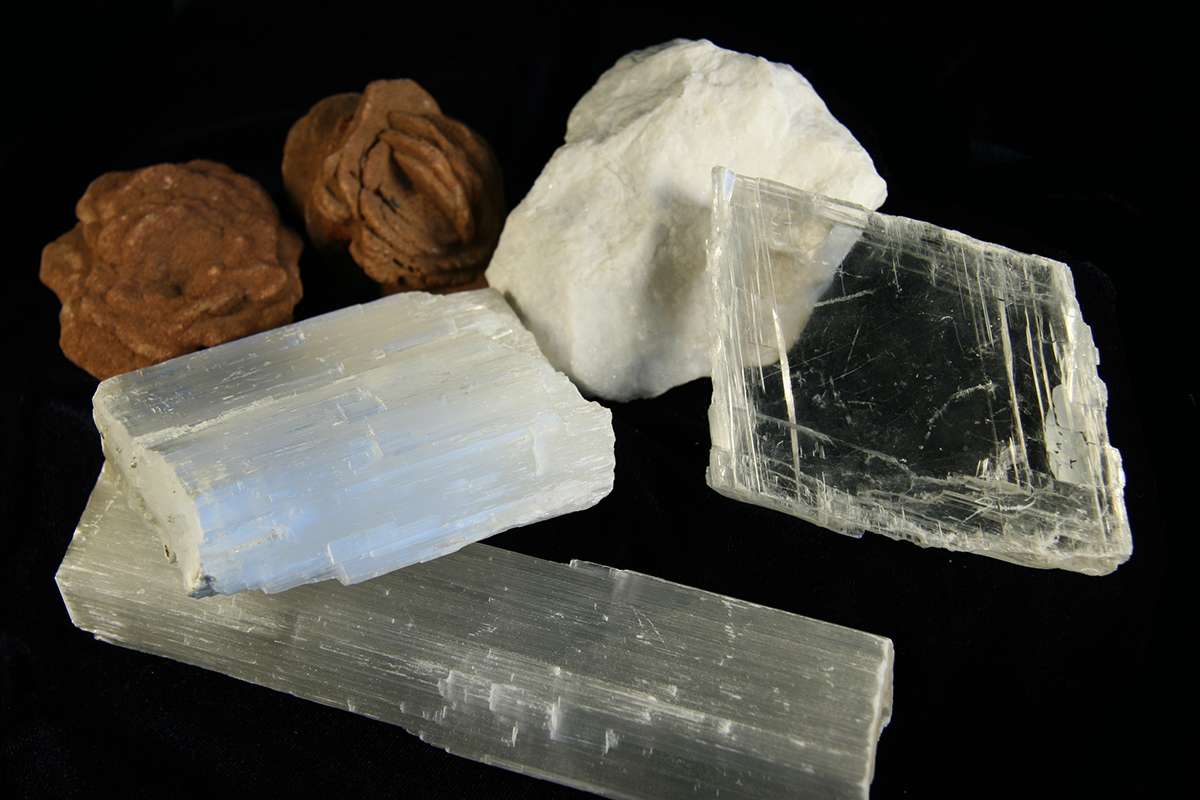
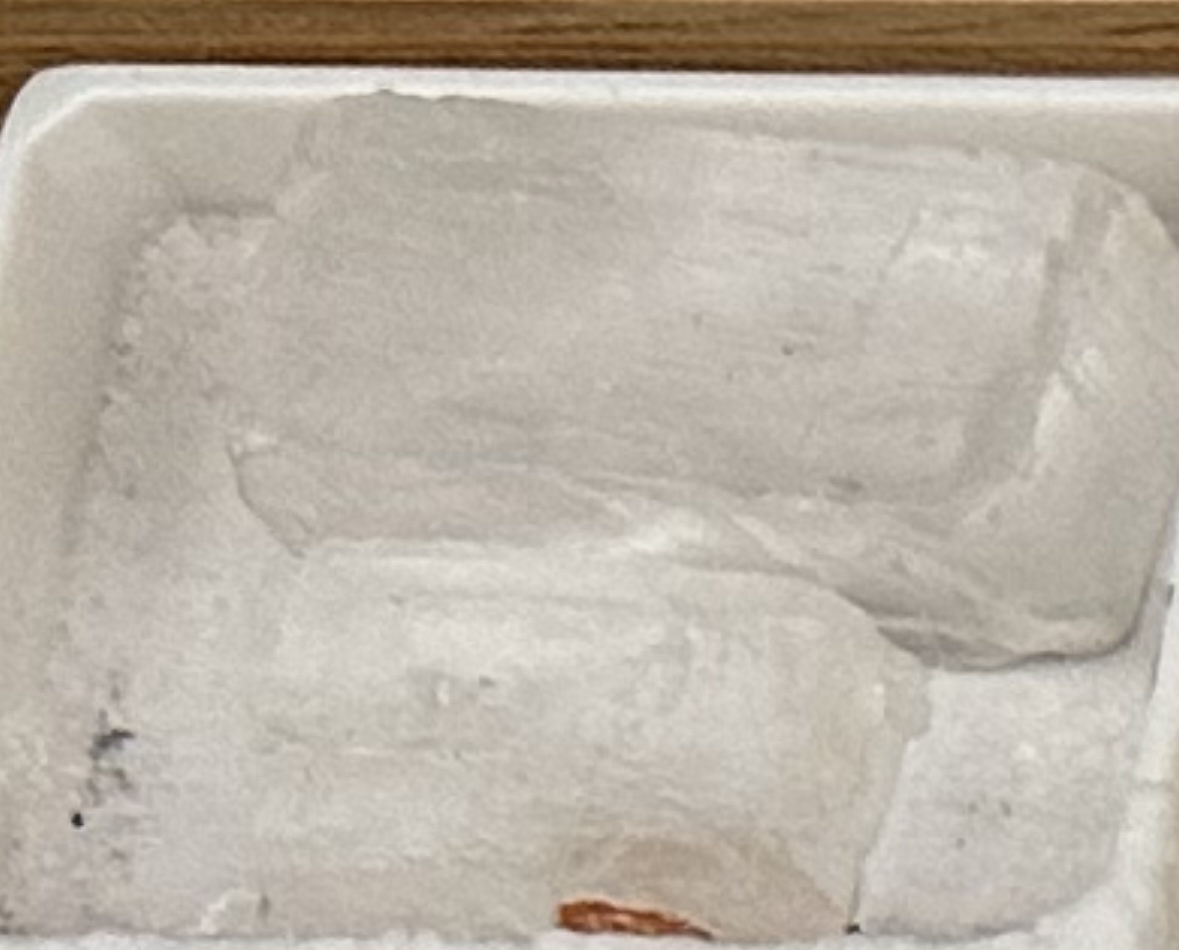
is literally salt (NaCl), is salty
white to light pink or tan
vitreous (glassy) luster
white streak
2.5 hardness (soft), feels light
Halite

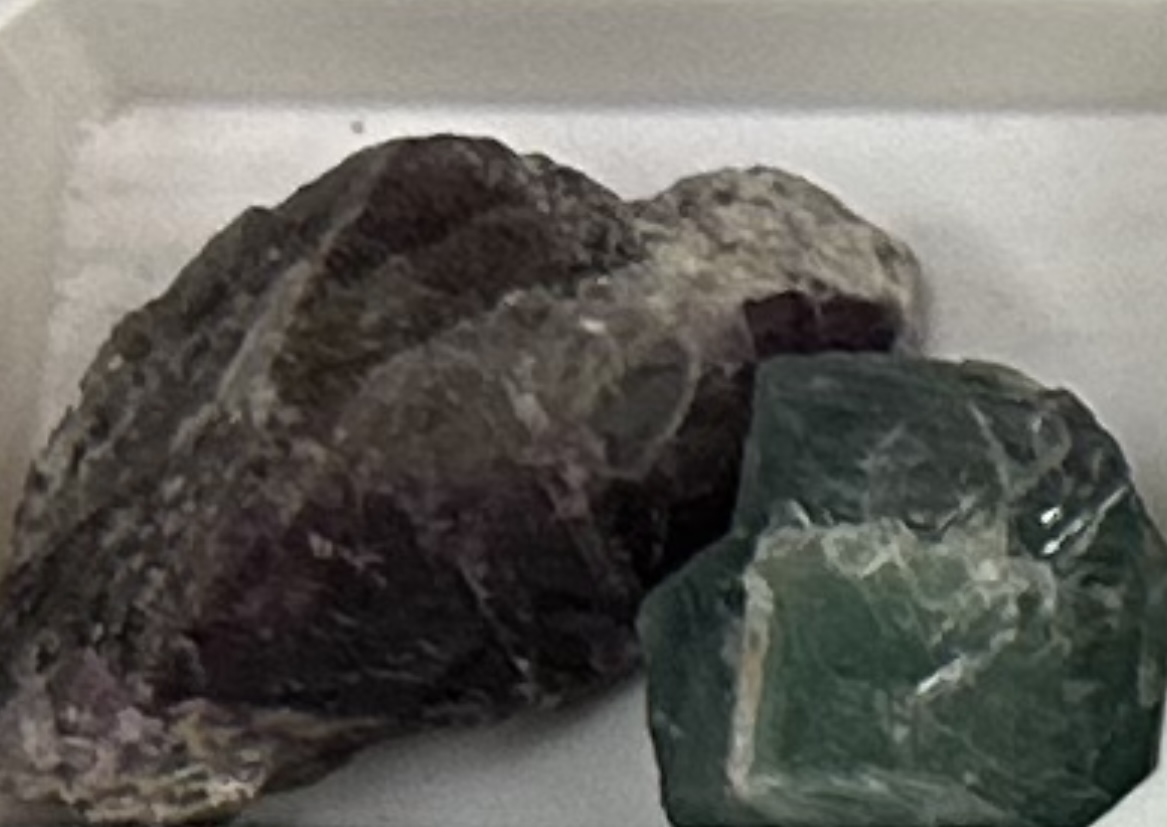
Purple, lilac, golden-yellow, green, colourless, blue, pink, champagne, brown.
hardness 4 (scratched by copper penny)
vitreous & dull luster
can be crystalline with octahedral faces
Fluorite
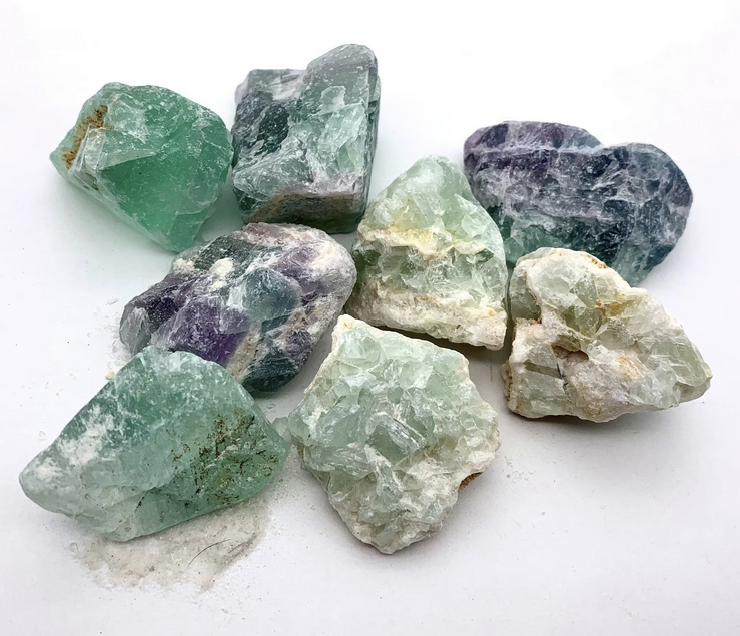

6.5 - 7 hardness (steel nail)
white, gray, blue, pink, yellow, brown, and red.
very waxy and dull luster
conchoidal fracture
slightly translucent to opaque
Chalcedony
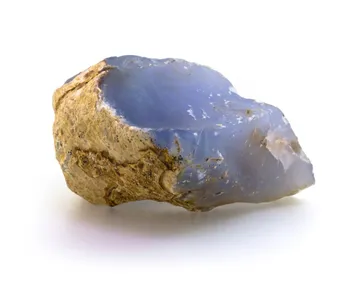
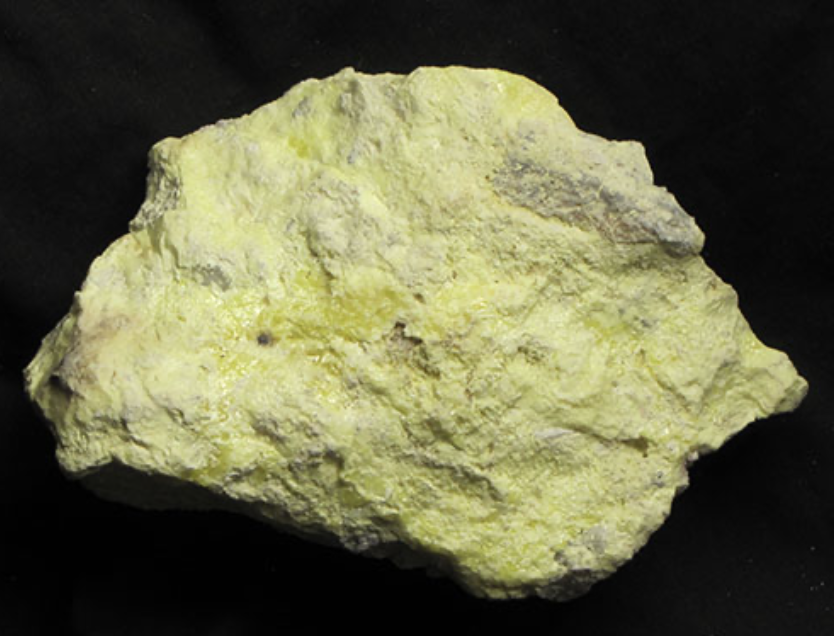
Yellow, sulphur-yellow, brownish or greenish yellow, orange, white
colorless streak
1.5 - 2.5 hardness (very soft)
resinous, greasy or soapy
Sulfur

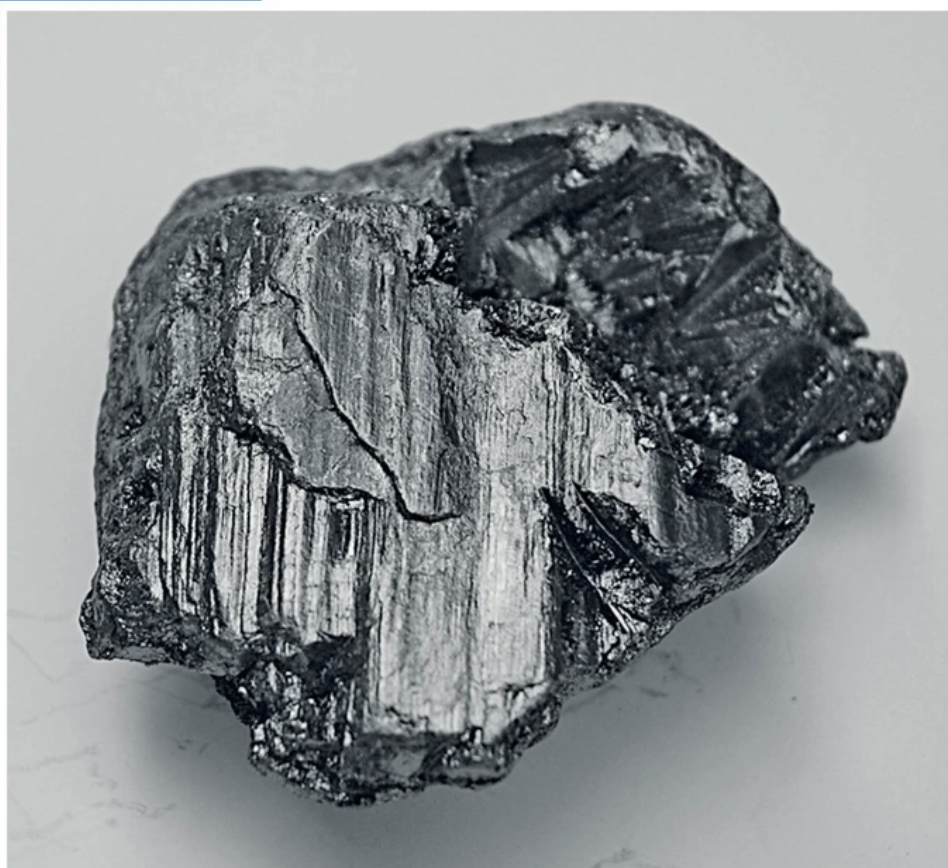
metallic
1 - 2 hardness (very soft)
dark-grey to black
dark-grey to black streak
Greasy feel; Smudges easily
Graphite
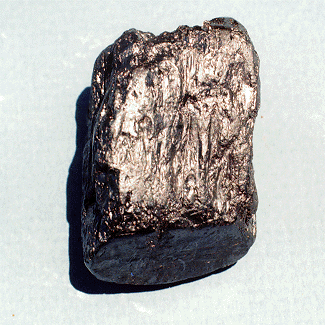
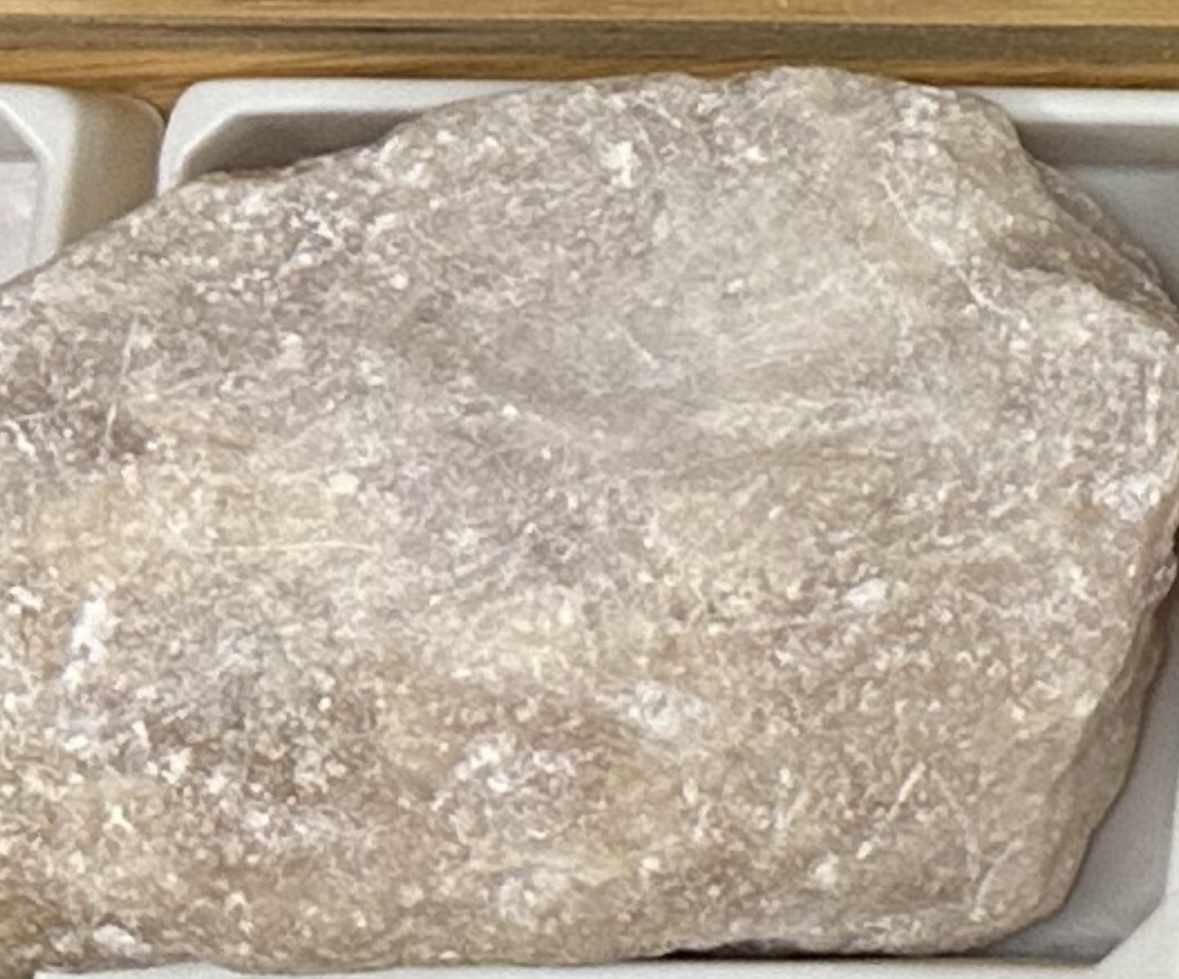
can vary from white to pale green, gray, or even colorless
Greasy, waxy, pearly luster
1 hardness (extremely soft)
excellent basal cleavage
Talc
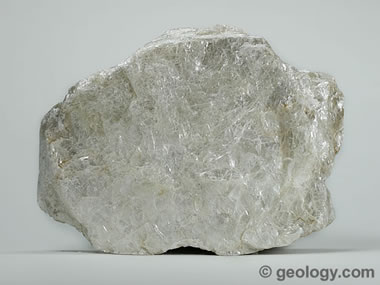
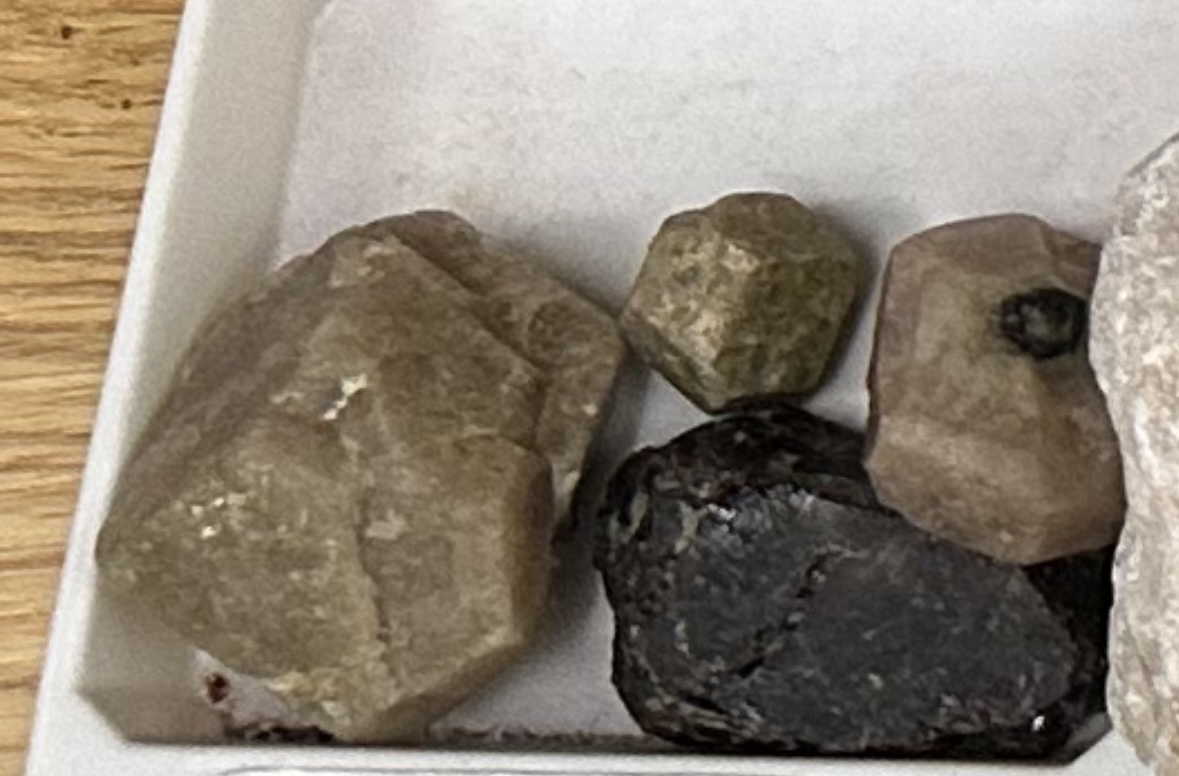
dark red to reddish brown being the most common, but varieties may be red-violet, brown, black emerald green, or even white.
6.5 - 7.5 (very hard, steel nail scratches)
Luster is vitreous (glass-like) to resin-like, transparent to translucent.
Garnet
